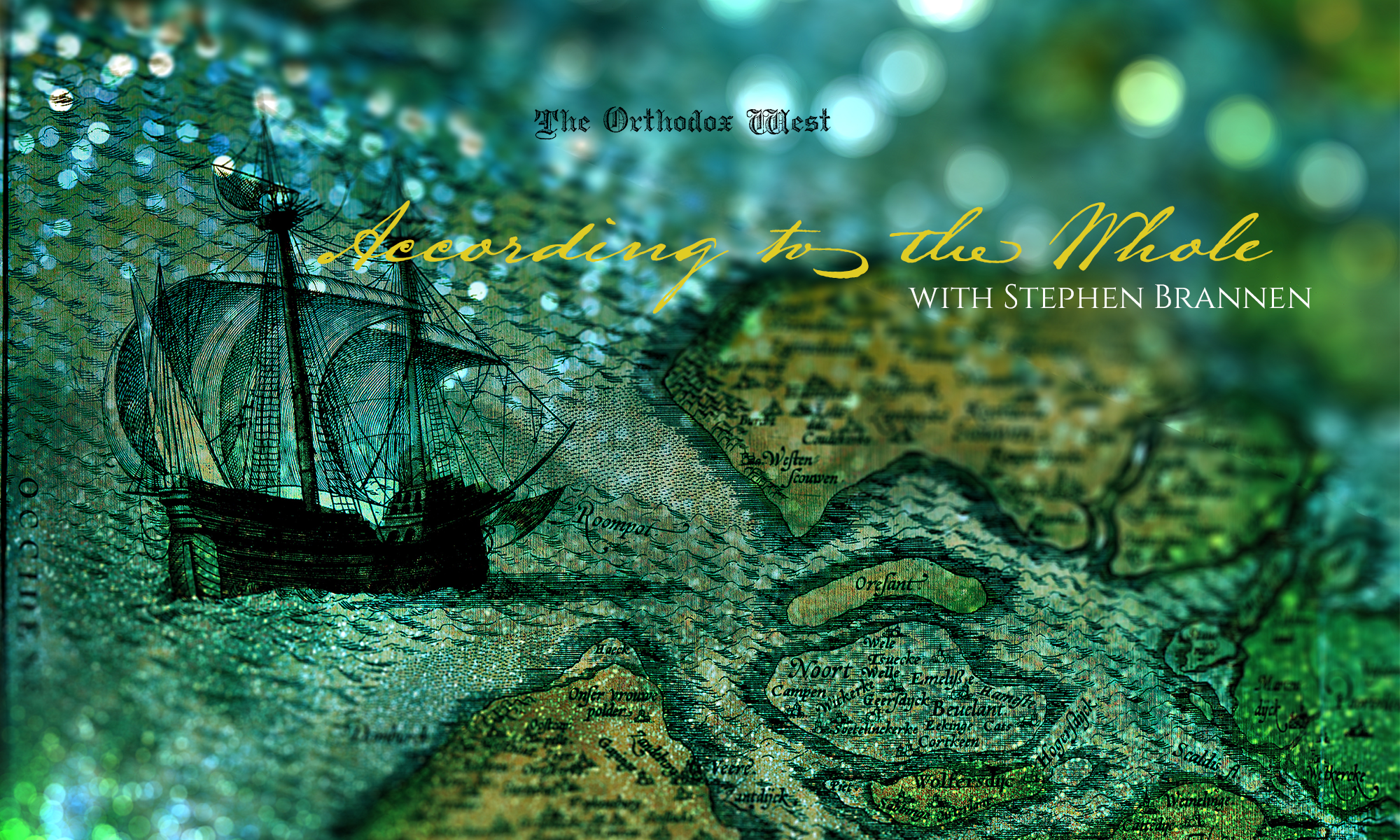In the Western Tradition, Septuagesima Sunday kicks off the Easter cycle of the Church Year (like beginning the Triodion in the Eastern Rite). As the first of the three Sundays which make up the Pre-Lent season in the West, Septuagesima (the Sunday nearest the 70th day before Easter) makes it clear liturgically that we have turned a corner: all “alleluias” are suppressed until Easter, as well as other exuberantly joyful hymns and canticles, and the liturgical color is changed to violet. The lectionary also shifts gears to themes appropriate to this new path: themes of repentance, renunciation, and works of mercy.
But underneath the more obvious and attention-grabbing passages of the Epistles and Gospels at Mass, there’s a more structured string of passages that begins on Septuagesima, which are found in the lessons at Matins. These Matins lessons begin building for us the narrative of salvation history through the Old Testament, advancing in order both chronologically and thematically from Sunday to Sunday, even influencing and informing the Gospel readings at Mass. But like an unseen stream steering a fertile band through a landscape, this important narrative stream that begins at Septuagesima Sunday and runs all the way up to Passiontide (where it ducks underground and resurfaces on Holy Saturday) is often overlooked.
The first Matins lessons in this new lectionary cycle, on Septuagesima, begin at the beginning. The story of creation and then of the fall of Adam and Eve and their expulsion from the garden is recounted. At Mass, the Gospel is the parable of the laborers in the vineyard (St. Matthew 20:1…), and the themes of gardens and vineyards, an unfaithful garden-tender and the hired laborers, the curse of working the earth and the wage for working the vineyard are all connections between Matins and Mass. This reading, situated at the very beginning of the Lenten preparation, is also serendipitously symmetrical to St. John Chrysostom’s brilliant reference to it in his enduring Paschal homily at Easter Vigil. But this parable, believe it or not, also hides the secret plan for the readings at Matins for the following Sundays.
There’s one particular interpretation (one of many) of this parable expressed by several Church fathers, including St. Gregory the Great, and actually going all the way back at least to Origen. This interpretation sees in the five groups of laborers called in the early morning, the third, sixth, ninth, and eleventh hours, five distinct time periods in history. As St. Gregory puts it: “For the morning of the world was from Adam to Noah: the third hour from Noah to Abraham: the sixth from Abraham to Moses: the ninth from Moses till the Coming of the Lord: the eleventh from the Lord’s Coming till the end of the world.” Can you guess which figures are focussed on in the coming Sundays at Matins? Yes: Adam, Noah, Abraham, and Moses.
I think the fact that this particular interpretation of the Gospel parable is also the hidden key that unlocks the thematic design of the lectionary is just stupendous.
So Adam, Noah, Abraham (along with a few of his direct descendants), and Moses are all examined on subsequent Sundays, but how do their stories influence and inform the Gospels proclaimed on those days? The hermeneutical key to understanding how the Matins and Mass readings will interact is to understand that all of these people were in some way prefigurements of Christ. Christ is the true Adam, Christ is the true Noah, etc. So Christ the true Adam is the new capitulation of mankind, and (as far as this parable goes) gathers together all the different groups of laborers to pay them their wage of salvation. Christ the true Noah, in the parable of the seed and the soils (St. Luke 8:4…), replants and re-establishes the earth, sowing new seed (new life). Christ the true Abraham (who was justified by faith) declares to the blind man, “Thy faith hath saved thee” (St. Luke 18:31). And now we’re up to the first Sunday of Lent.
The Matins lessons of the first Sunday of Lent, which would have been where Isaac would be focussed on, are subsumed by Pauline exhortations to a Lenten disposition, as the Mass Gospel recounts Jesus’ fasting in the wilderness. But the next three Sundays pick up the thread again with the Abrahamic line of Jacob and Joseph, and finally with Moses. Again, the hermeneutic is that Christ is the fulfillment of what each of these men prefigured in their stories.
At this point the lectionary has brought us to Passiontide, the final two weeks of Lent. As the Old Testament narrative disappears in Matins during this period, it re-emerges again finally on Holy Saturday in spectacular fashion. The hidden stream bursts out upon the Church in a cataract of readings (prophecies), adorned with special canticles, tracts, and Collects, in that same order which had guided us through Lent: the story of Adam, then of Noah, then of Abraham, then of Moses. [Then there are eight more lessons from Isaiah, Baruch, Ezekiel, Exodus, Jonah, Deuteronomy, and Daniel for good measure.]
This crucial undercurrent of the Old Testament narrative on the way to Easter helped to shape it liturgically and spiritually into what it is now. The Church is telling us that the spiritual lessons we are trying to learn regarding prayer, fasting, and almsgiving should be viewed within the broader context of salvation history, the direction God steered the world in order to bring about our salvation. This understanding and appreciation will help us to better practice those disciplines. We, the eleventh hour laborers, should recognize how late came our call and how gracious is our wage. May we labor faithfully.

